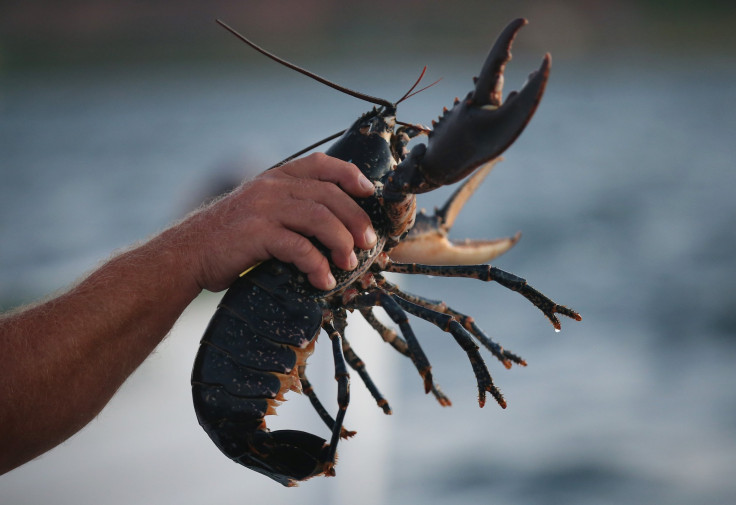Worm Named After Conan O'Brien Could Be Spelling Trouble For 'Ecologically Significant' Lobster

KEY POINTS
- Researchers discovered the egg-predator worm back in 2017
- A new study found that the presence of the worm in egg-bearing Caribbean spiny lobster was over 87%
- The presence of the worm appears to be affecting the lobsters' individual reproductive performance
A worm species discovered several years ago was named after comedian and host Conan O'Brien. Researchers now find that it could be one of the factors spelling trouble for the reproduction of the "economically significant" Caribbean spiny lobster.
It was in 2017 when researchers published their work describing a new worm species from egg masses of the Carribean spiny lobster (Panulirus argus). Named in good nature, they called it after Conan O'Brien (Carcinonemertes conanobrieni) because of "physical similarities between the new species and Mr. O'Brien." The species was described as long and pale with "slight tints of orange."
It was said to be the first Carcinonemertes species known to infect the Caribbean spiny lobster.
The worm is said to be symbiotic with the Caribbean spiny lobster, the researchers said then, but added that it may be considered a parasite or micropredator since it was seen in the brood masses at all life stages. Further, worms "have been shown to diminish reproductive output in infected lobsters," the researchers wrote.
In a new study, which was published this week in BMC Zoology, researchers shed further light on impacts of the C. conanobrieni on Caribbean spiny lobsters, which Clemson University described as an "ecologically significant and commercially lucrative species."
"Panulirus argus landings support a billion-dollar industrial fleet and artisan fishery across both developed and developing countries throughout its entire distribution, and this species represents a commodity that sells for higher market prices compared to other fished marine resources," the researchers of the new study wrote.
Lobster landings essentially pertain to the transfer of lobster catches from a vessel to land. In 2021, for instance, Caribbean spiny lobster landings in the Gulf of Mexico and South Atlantic were valued at $42 million.
However, landings of the Caribbean spiny lobster have decreased in the past decade, according to Clemson University. Scientists have proposed various factors like overfishing and environmental degradation. Now, with the researchers' work, it appears that the C. conanobrieni may also be a contributing factor to the problem.
Looking at 90 egg-bearing lobsters caught near Pueblo Viejo, Magdalena, Colombia, the researchers found that the prevalence of C. conanobrieni in the studied samples was 87.78%. And, it appears that the presence of the worm is affecting the lobsters' reproductive performance.
"Infected females brooding late-stage embryos exhibited lower fecundity, lower reproductive performance values, and higher embryo mortality compared to infected females brooding early-stage embryos," the researchers wrote. "Embryo stage and worm infection level negatively impacted fecundity and reproductive output. Worm infection level and the number of adult nemertean worms also negatively affected embryo mortality."
A photo of the egg-predator worm can be seen here.
The effects varied from one female to another, said one of the study authors, Antonio Baeza of Clemson University, who was also among the researchers who discovered C. conanobrieni a few years back. Why this is so remains unclear.
Overall, the findings showed that the presence of the egg predator C. conanobrieni may be resulting in a decline in the individual-level reproduction performance of the Caribbean spiny lobsters, the researchers said. Together with the other stressors on the important species, this could be problematic for the fisheries industry.
"A whole industry and coastal communities along the entire Caribbean basin rely on this species," Baeza said in the Clemson University release.
Furthermore, these lobsters also play important roles in their environments, the university explained. They are prey to creatures like sharks and turtles but are also predators of other creatures like snails and clams.
So far, the exact extent of the worms' impact remains to be seen. The researchers recommend monitoring the situation, for instance by also sampling the health and reproductive performance of P. argus in other places in the Caribbean — places that have yet to be screened for the presence of C. conanobrieni.
Understanding the situation better could then help provide a wider view of the impacts of such Carcinonemertes worms. Perhaps, it could also inform possible means to "minimize adverse effects," said Baeza.
© Copyright IBTimes 2025. All rights reserved.






















